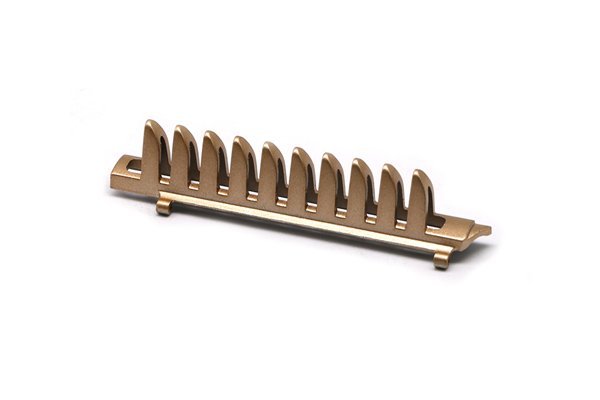Did you know that CNC (Computer Numerical Control) machining has revolutionized the manufacturing industry, allowing for greater precision and efficiency in producing complex components? According to the Association for Manufacturing Technology, CNC machining accounts for over 50% of manufacturing processes in the United States. With various options available, such as 3-axis, 4-axis, and 5-axis machining, understanding the differences is crucial for manufacturers and engineers. So, what exactly sets these machining methods apart?
In this comprehensive guide, we will delve into the intricacies that differentiate 3-axis, 4-axis, and 5-axis CNC machining. By the end of this blog, you will have a detailed understanding of each method, their applications, advantages, challenges, and selection criteria, providing insight to help you make informed decisions about which machining strategy best suits your production needs.

CNC machining is a subtractive manufacturing process that involves removing material from a workpiece to achieve the desired dimensions and surface finish. This is accomplished using various tools, such as mills, lathes, and routers, that are controlled by a computer program. The main components of a CNC machine include:

In CNC machining, the concept of “axes” refers to the number of directions in which a machine tool can move. Each axis corresponds to a specific direction:
By adding more axes, machines can achieve more complex geometries and greater flexibility. Let’s explore the characteristics of 3-axis, 4-axis, and 5-axis machining.
3-Axis Machining Basics
The most common form of CNC machining is 3-axis machining. In this setup, the machine can move along the X, Y, and Z axes. A cutting tool is mounted on a spindle, which can rotate and move up and down along the Z-axis, while the workpiece is fixed in position.
Applications
3-axis machining is ideal for components that require simple shapes and flat surfaces. It’s commonly used in industries such as:
Advantages of 3-Axis Machining
Limitations
4-Axis Machining Basics
4-axis CNC machining adds an additional rotational axis, typically around the X-axis. This means that along with moving in X, Y, and Z directions, the workpiece can also rotate.
Applications
This functionality is essential for parts that require multiple sides to be machined without changing the workpiece setup:
Advantages of 4-Axis Machining

Limitations
5-Axis Machining Basics
5-axis CNC machining incorporates two additional rotational axes, allowing for unparalleled movement and flexibility. The workpiece can rotate along both the Y and Z axes, enabling access to virtually any angle.
Applications
5-axis machining is essential for producing highly complex components, especially in demanding industries:
Advantages of 5-Axis Machining
Limitations
6.1 Efficiency and Productivity
As you move from 3-axis to 5-axis machining, the system complexity, and potential productivity increase. While 3-axis machines are more suited for straightforward tasks, 4 and 5-axis machines save time by reducing setups and increasing accuracy for more complicated designs.
6.2 Cost Considerations
While 3-axis machines are cost-effective for simpler operations, both 4-axis and 5-axis systems involve substantial initial investments and require higher skill levels to operate effectively. For businesses focused on high-volume production of intricate parts, the long-term savings on time and labor can justify the investment in advanced technology.
6.3 Material Limitations
All three types of CNC machines can work with a variety of materials, but the choice of machine often depends on the material’s properties. For instance, harder materials may benefit from the precision offered by 5-axis machines due to fewer required setups and better access to contours.
7.1 Evaluate Component Complexity
Start by assessing the complexity of your components. If you need simple shapes, a 3-axis machine is likely sufficient. For parts requiring multiple angles and detailed features, consider moving to 4 or 5-axis.
7.2 Production Volume and Budget
If you are working on low-volume production runs, the investment in a 5-axis machine may not be justified. Conversely, high-volume intricate parts may benefit significantly from the efficiencies gained by 4
7.3 Workflow and Lead Times
Evaluate your workflow. If your processes require a lot of re-fixturing, a 5-axis machine can streamline production and reduce lead times.
In conclusion, understanding the differences between 3-axis, 4-axis, and 5-axis CNC machining is crucial for making informed decisions in manufacturing. Each machining process has its own unique capabilities, advantages, and considerations that can significantly impact production efficiency, cost, and complexity.
As you assess your needs, consider factors such as component complexity, production volume, and your budget. By matching the appropriate CNC machining method to your manufacturing goals, you can enhance productivity, reduce waste, and ensure the highest quality of your components.
The journey of machining is a key aspect of modern manufacturing with exciting potential. Being equipped with knowledge of these machining methods allows you to remain competitive, whether you’re a seasoned manufacturer or just beginning your journey into the realm of CNC machining. Let this guide serve as a roadmap for optimizing your CNC machining processes, ensuring that you can lead in crafting high-quality consumer demands in an ever-evolving marketplace.




